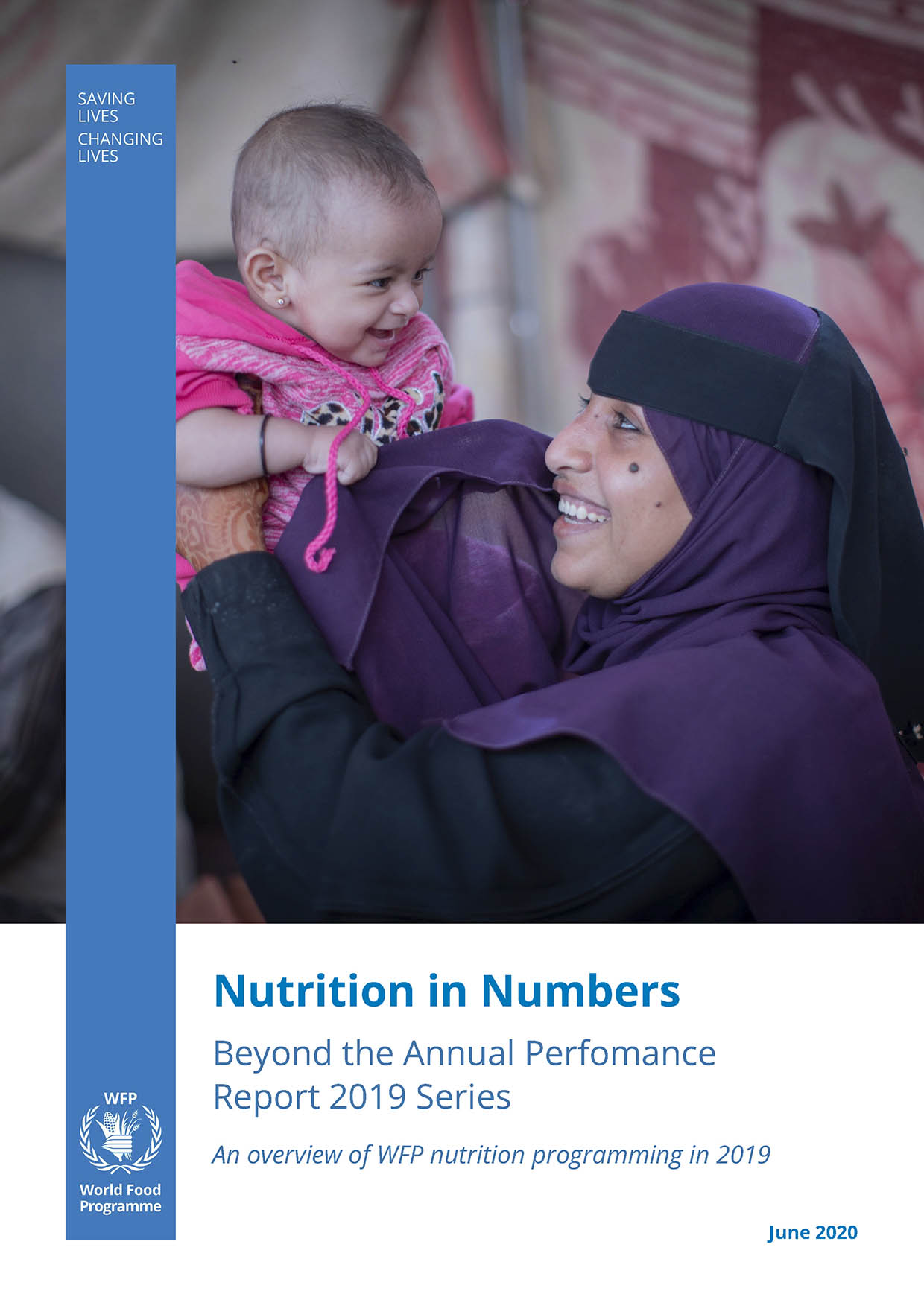In 2019, WFP and its partners continued to prioritize nutrition, implementing a range of programmes in 74 countries. Programmes to treat and prevent malnutrition (nutrition-specific assistance) were delivered to 17.2 million people – an increase of 9 percent from 2018. Nearly half of these were in countries experiencing level 2 or level 3 (the most severe) emergencies, and 80 percent were in countries facing a humanitarian crisis.
We prioritized women and children with emphasis on the critical 1,000 days between conception and a child’s second birthday, when nutrition lays the foundations for a lifetime. WFP’s assistance ensured 10.8 million children, 6.4 million women, and 400,000 people living with HIV/AIDS and TB, could access healthy diets or, when necessary, malnutrition treatment and prevention interventions.
The continued use and scale up of fortified staple foods to address vitamin and mineral deficiencies (hidden hunger) remained a priority for WFP as one of the most cost-effective ways to achieve SDG2. In 2019, WFP supported governments to provide 47 million people with access to fortified rice through retail channels and 200 million people via government-led social safety nets.

